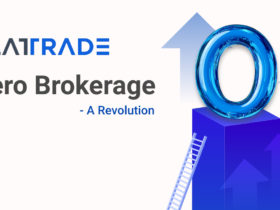The imposition of the 15% export duty on a variety of steel products would make exports significantly less attractive in the coming months and could put pressure on domestic steel prices along with industry capacity utilization levels, said rating agency ICRA in a report.
In an attempt to improve domestic steel availability and reign in steel prices, the Central Government imposed a 15% export duty on a range of finished steel products which accounted for almost 95% of India’s overall finished steel exports in fiscal year 2021 and 2022. In other steel categories, an export duty of 15% has also been levied on pig iron.
Earlier, finished steel exports accounted for about 10-11% of India’s finished steel production in the last two fiscal years as domestic mills tapped export markets. But the government’s latest decision weighed on share prices of steel companies. Tata Steel and Jindal Stainless tanked on this negative news.
Meanwhile, Tata Steel CEO T.V Narendran in an interview to Reuters said that the government’s sudden decision to impose an export tax on some steel products could force Tata Steel to review its production targets, if the levy remains in place for a long time. India’s top steelmakers body has also warned that the new duty will “adversely impact” mills that have been aiming to boost exports and widen global market share. The Indian Steel Association is also likely to meet Sitharaman, as it warned that China could gain from India’s loss.
However, the Centre has chosen to keep steel semis out of the ambit of export duties. As a result, ICRA believes that export of semis, which declined by 26% year-on-year (Y-o-Y) in FY2022 to 4.9 million tonnes (mt) is likely to witness a significant increase in FY2023.
“Europe, Vietnam and the Middle East were the three largest destinations for Indian steel exports, together accounting for around 50% of India’s overall steel exports, including semis. We believe that many of these destinations would become less attractive now as mills evaluate the economics of a higher duty”, said Jayanta Roy, Senior Vice-President & Group Head, Corporate Sector Ratings, ICRA.
He added,”With steel export offers for deliveries to Europe being higher by 10-11% over more competitive markets like South-East Asia and the Middle East, the adverse impact of the new export duties on steel exports to Europe would be relatively less severe than that of South-East Asia and the Middle Eastern markets.”
Further, the Government has increased the export duty on 58% and above Fe grade iron ore fines and lumps from 30% to 50%. But, it may not be a material shock-absorber as it affects the economics of only less than 15% of total iron ore that was exported by domestic miners in FY2022, ICRA noted. Additionally, the Government has withdrawn the 5% and 2.5% import duties on coke and coal, respectively, which is also marginally positive.
Steel demand outlook
With various downstream industries coping with the adverse impacts of elevated commodity prices, domestic steel demand declined by 7.2% month-on-month in April 2022. Channel checks showed lower demand for steel in May 2022 that led to domestic hot-rolled-coil (HRC) prices contracting by 12% over the high watermark recorded in the first week of April 2022.
ICRA’s analysis suggested that amid a modest decline in input costs due to a correction in iron ore prices and waiver of import duty on coal, the industry’s operating profits could see a downward correction of US$75-100/MT in the seasonally weak Q2 FY2023 compared to the current quarter.
Following the export duty levy, the pace of execution of some of the expansion projects, which was announced by steelmakers, could slow down as mill cash flows could weaken significantly going forward if the export duty is maintained over the medium term.





